Hui Xiong
RETuning: Upgrading Inference-Time Scaling for Stock Movement Prediction with Large Language Models
Oct 24, 2025Abstract:Recently, large language models (LLMs) have demonstrated outstanding reasoning capabilities on mathematical and coding tasks. However, their application to financial tasks-especially the most fundamental task of stock movement prediction-remains underexplored. We study a three-class classification problem (up, hold, down) and, by analyzing existing reasoning responses, observe that: (1) LLMs follow analysts' opinions rather than exhibit a systematic, independent analytical logic (CoTs). (2) LLMs list summaries from different sources without weighing adversarial evidence, yet such counterevidence is crucial for reliable prediction. It shows that the model does not make good use of its reasoning ability to complete the task. To address this, we propose Reflective Evidence Tuning (RETuning), a cold-start method prior to reinforcement learning, to enhance prediction ability. While generating CoT, RETuning encourages dynamically constructing an analytical framework from diverse information sources, organizing and scoring evidence for price up or down based on that framework-rather than on contextual viewpoints-and finally reflecting to derive the prediction. This approach maximally aligns the model with its learned analytical framework, ensuring independent logical reasoning and reducing undue influence from context. We also build a large-scale dataset spanning all of 2024 for 5,123 A-share stocks, with long contexts (32K tokens) and over 200K samples. In addition to price and news, it incorporates analysts' opinions, quantitative reports, fundamental data, macroeconomic indicators, and similar stocks. Experiments show that RETuning successfully unlocks the model's reasoning ability in the financial domain. Inference-time scaling still works even after 6 months or on out-of-distribution stocks, since the models gain valuable insights about stock movement prediction.
GraphSearch: An Agentic Deep Searching Workflow for Graph Retrieval-Augmented Generation
Sep 26, 2025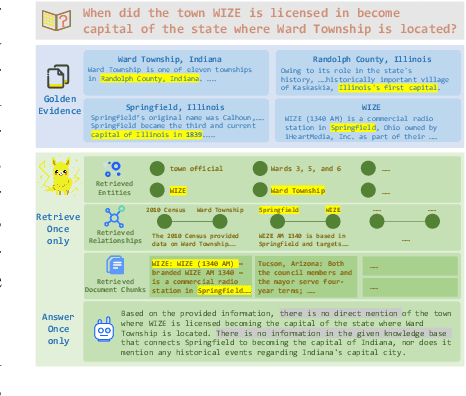
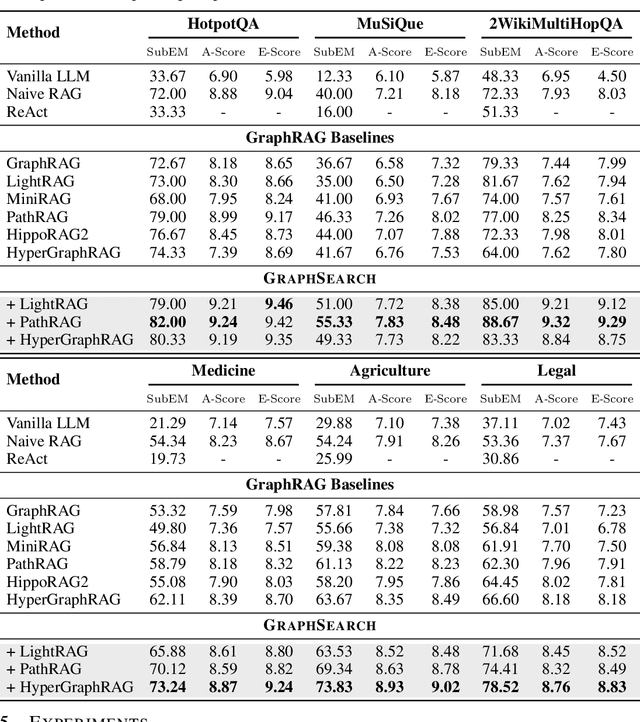

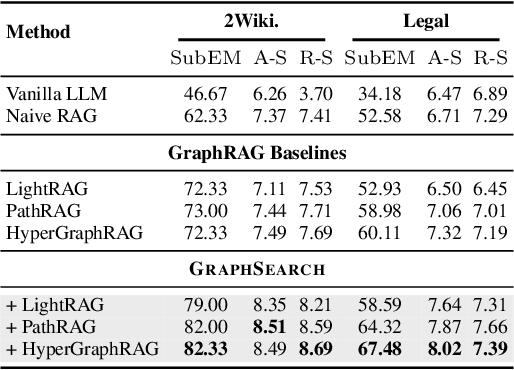
Abstract:Graph Retrieval-Augmented Generation (GraphRAG) enhances factual reasoning in LLMs by structurally modeling knowledge through graph-based representations. However, existing GraphRAG approaches face two core limitations: shallow retrieval that fails to surface all critical evidence, and inefficient utilization of pre-constructed structural graph data, which hinders effective reasoning from complex queries. To address these challenges, we propose \textsc{GraphSearch}, a novel agentic deep searching workflow with dual-channel retrieval for GraphRAG. \textsc{GraphSearch} organizes the retrieval process into a modular framework comprising six modules, enabling multi-turn interactions and iterative reasoning. Furthermore, \textsc{GraphSearch} adopts a dual-channel retrieval strategy that issues semantic queries over chunk-based text data and relational queries over structural graph data, enabling comprehensive utilization of both modalities and their complementary strengths. Experimental results across six multi-hop RAG benchmarks demonstrate that \textsc{GraphSearch} consistently improves answer accuracy and generation quality over the traditional strategy, confirming \textsc{GraphSearch} as a promising direction for advancing graph retrieval-augmented generation.
See&Trek: Training-Free Spatial Prompting for Multimodal Large Language Model
Sep 19, 2025Abstract:We introduce SEE&TREK, the first training-free prompting framework tailored to enhance the spatial understanding of Multimodal Large Language Models (MLLMS) under vision-only constraints. While prior efforts have incorporated modalities like depth or point clouds to improve spatial reasoning, purely visualspatial understanding remains underexplored. SEE&TREK addresses this gap by focusing on two core principles: increasing visual diversity and motion reconstruction. For visual diversity, we conduct Maximum Semantic Richness Sampling, which employs an off-the-shell perception model to extract semantically rich keyframes that capture scene structure. For motion reconstruction, we simulate visual trajectories and encode relative spatial positions into keyframes to preserve both spatial relations and temporal coherence. Our method is training&GPU-free, requiring only a single forward pass, and can be seamlessly integrated into existing MLLM'S. Extensive experiments on the VSI-B ENCH and STI-B ENCH show that S EE &T REK consistently boosts various MLLM S performance across diverse spatial reasoning tasks with the most +3.5% improvement, offering a promising path toward stronger spatial intelligence.
VSI: Visual Subtitle Integration for Keyframe Selection to enhance Long Video Understanding
Aug 09, 2025Abstract:Long video understanding presents a significant challenge to multimodal large language models (MLLMs) primarily due to the immense data scale. A critical and widely adopted strategy for making this task computationally tractable is keyframe retrieval, which seeks to identify a sparse set of video frames that are most salient to a given textual query. However, the efficacy of this approach is hindered by weak multimodal alignment between textual queries and visual content and fails to capture the complex temporal semantic information required for precise reasoning. To address this, we propose Visual-Subtitle Integeration(VSI), a multimodal keyframe search method that integrates subtitles, timestamps, and scene boundaries into a unified multimodal search process. The proposed method captures the visual information of video frames as well as the complementary textual information through a dual-stream search mechanism by Video Search Stream as well as Subtitle Match Stream, respectively, and improves the keyframe search accuracy through the interaction of the two search streams. Experimental results show that VSI achieve 40.00% key frame localization accuracy on the text-relevant subset of LongVideoBench and 68.48% accuracy on downstream long Video-QA tasks, surpassing competitive baselines by 20.35% and 15.79%, respectively. Furthermore, on the LongVideoBench, VSI achieved state-of-the-art(SOTA) in medium-to-long video-QA tasks, demonstrating the robustness and generalizability of the proposed multimodal search strategy.
ChartMark: A Structured Grammar for Chart Annotation
Jul 29, 2025Abstract:Chart annotations enhance visualization accessibility but suffer from fragmented, non-standardized representations that limit cross-platform reuse. We propose ChartMark, a structured grammar that separates annotation semantics from visualization implementations. ChartMark features a hierarchical framework mapping onto annotation dimensions (e.g., task, chart context), supporting both abstract intents and precise visual details. Our toolkit demonstrates converting ChartMark specifications into Vega-Lite visualizations, highlighting its flexibility, expressiveness, and practical applicability.
Da Yu: Towards USV-Based Image Captioning for Waterway Surveillance and Scene Understanding
Jun 24, 2025Abstract:Automated waterway environment perception is crucial for enabling unmanned surface vessels (USVs) to understand their surroundings and make informed decisions. Most existing waterway perception models primarily focus on instance-level object perception paradigms (e.g., detection, segmentation). However, due to the complexity of waterway environments, current perception datasets and models fail to achieve global semantic understanding of waterways, limiting large-scale monitoring and structured log generation. With the advancement of vision-language models (VLMs), we leverage image captioning to introduce WaterCaption, the first captioning dataset specifically designed for waterway environments. WaterCaption focuses on fine-grained, multi-region long-text descriptions, providing a new research direction for visual geo-understanding and spatial scene cognition. Exactly, it includes 20.2k image-text pair data with 1.8 million vocabulary size. Additionally, we propose Da Yu, an edge-deployable multi-modal large language model for USVs, where we propose a novel vision-to-language projector called Nano Transformer Adaptor (NTA). NTA effectively balances computational efficiency with the capacity for both global and fine-grained local modeling of visual features, thereby significantly enhancing the model's ability to generate long-form textual outputs. Da Yu achieves an optimal balance between performance and efficiency, surpassing state-of-the-art models on WaterCaption and several other captioning benchmarks.
Unveiling the Learning Mind of Language Models: A Cognitive Framework and Empirical Study
Jun 16, 2025
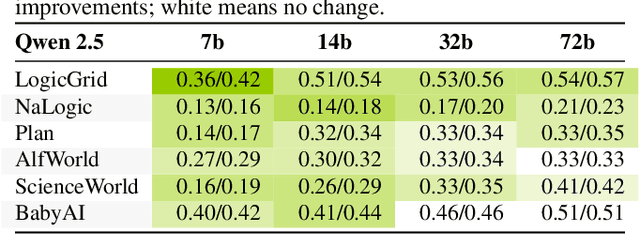

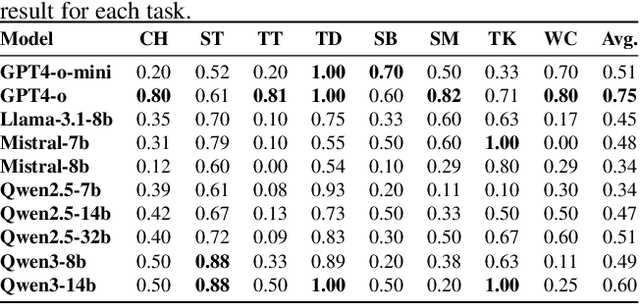
Abstract:Large language models (LLMs) have shown impressive capabilities across tasks such as mathematics, coding, and reasoning, yet their learning ability, which is crucial for adapting to dynamic environments and acquiring new knowledge, remains underexplored. In this work, we address this gap by introducing a framework inspired by cognitive psychology and education. Specifically, we decompose general learning ability into three distinct, complementary dimensions: Learning from Instructor (acquiring knowledge via explicit guidance), Learning from Concept (internalizing abstract structures and generalizing to new contexts), and Learning from Experience (adapting through accumulated exploration and feedback). We conduct a comprehensive empirical study across the three learning dimensions and identify several insightful findings, such as (i) interaction improves learning; (ii) conceptual understanding is scale-emergent and benefits larger models; and (iii) LLMs are effective few-shot learners but not many-shot learners. Based on our framework and empirical findings, we introduce a benchmark that provides a unified and realistic evaluation of LLMs' general learning abilities across three learning cognition dimensions. It enables diagnostic insights and supports evaluation and development of more adaptive and human-like models.
Application-Driven Value Alignment in Agentic AI Systems: Survey and Perspectives
Jun 11, 2025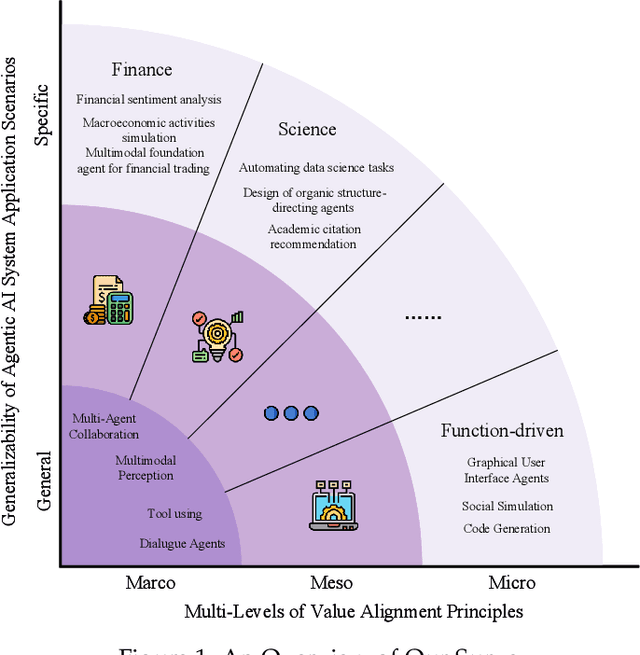
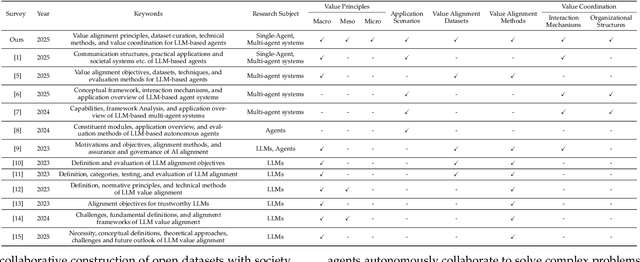
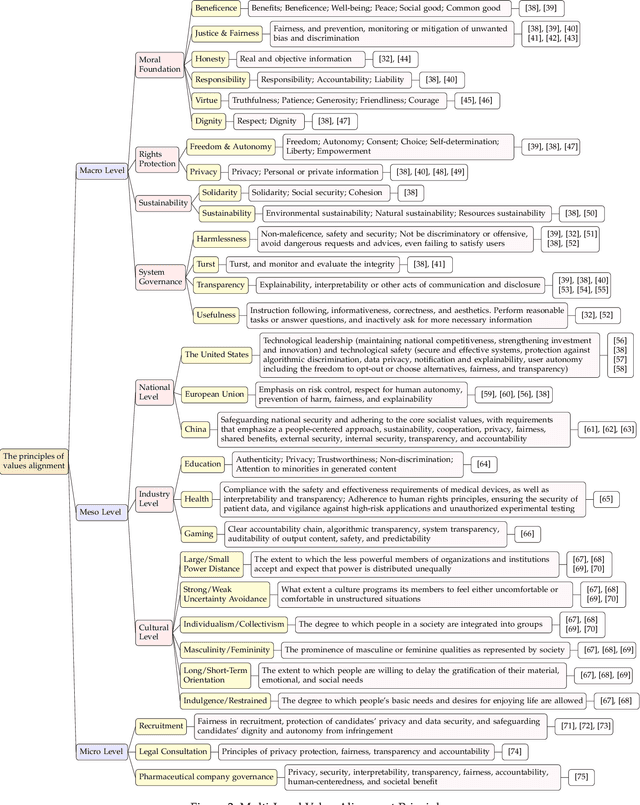
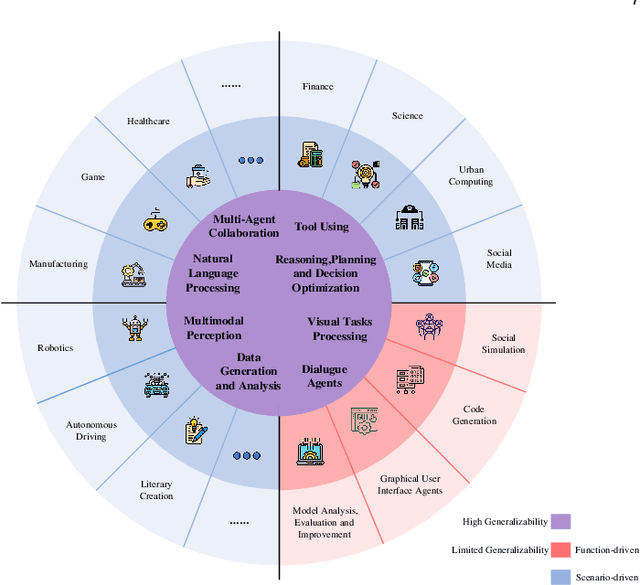
Abstract:The ongoing evolution of AI paradigms has propelled AI research into the Agentic AI stage. Consequently, the focus of research has shifted from single agents and simple applications towards multi-agent autonomous decision-making and task collaboration in complex environments. As Large Language Models (LLMs) advance, their applications become more diverse and complex, leading to increasingly situational and systemic risks. This has brought significant attention to value alignment for AI agents, which aims to ensure that an agent's goals, preferences, and behaviors align with human values and societal norms. This paper reviews value alignment in agent systems within specific application scenarios. It integrates the advancements in AI driven by large models with the demands of social governance. Our review covers value principles, agent system application scenarios, and agent value alignment evaluation. Specifically, value principles are organized hierarchically from a top-down perspective, encompassing macro, meso, and micro levels. Agent system application scenarios are categorized and reviewed from a general-to-specific viewpoint. Agent value alignment evaluation systematically examines datasets for value alignment assessment and relevant value alignment methods. Additionally, we delve into value coordination among multiple agents within agent systems. Finally, we propose several potential research directions in this field.
SAFER: A Calibrated Risk-Aware Multimodal Recommendation Model for Dynamic Treatment Regimes
Jun 07, 2025



Abstract:Dynamic treatment regimes (DTRs) are critical to precision medicine, optimizing long-term outcomes through personalized, real-time decision-making in evolving clinical contexts, but require careful supervision for unsafe treatment risks. Existing efforts rely primarily on clinician-prescribed gold standards despite the absence of a known optimal strategy, and predominantly using structured EHR data without extracting valuable insights from clinical notes, limiting their reliability for treatment recommendations. In this work, we introduce SAFER, a calibrated risk-aware tabular-language recommendation framework for DTR that integrates both structured EHR and clinical notes, enabling them to learn from each other, and addresses inherent label uncertainty by assuming ambiguous optimal treatment solution for deceased patients. Moreover, SAFER employs conformal prediction to provide statistical guarantees, ensuring safe treatment recommendations while filtering out uncertain predictions. Experiments on two publicly available sepsis datasets demonstrate that SAFER outperforms state-of-the-art baselines across multiple recommendation metrics and counterfactual mortality rate, while offering robust formal assurances. These findings underscore SAFER potential as a trustworthy and theoretically grounded solution for high-stakes DTR applications.
On the Transferability and Discriminability of Repersentation Learning in Unsupervised Domain Adaptation
May 28, 2025Abstract:In this paper, we addressed the limitation of relying solely on distribution alignment and source-domain empirical risk minimization in Unsupervised Domain Adaptation (UDA). Our information-theoretic analysis showed that this standard adversarial-based framework neglects the discriminability of target-domain features, leading to suboptimal performance. To bridge this theoretical-practical gap, we defined "good representation learning" as guaranteeing both transferability and discriminability, and proved that an additional loss term targeting target-domain discriminability is necessary. Building on these insights, we proposed a novel adversarial-based UDA framework that explicitly integrates a domain alignment objective with a discriminability-enhancing constraint. Instantiated as Domain-Invariant Representation Learning with Global and Local Consistency (RLGLC), our method leverages Asymmetrically-Relaxed Wasserstein of Wasserstein Distance (AR-WWD) to address class imbalance and semantic dimension weighting, and employs a local consistency mechanism to preserve fine-grained target-domain discriminative information. Extensive experiments across multiple benchmark datasets demonstrate that RLGLC consistently surpasses state-of-the-art methods, confirming the value of our theoretical perspective and underscoring the necessity of enforcing both transferability and discriminability in adversarial-based UDA.
 Add to Chrome
Add to Chrome Add to Firefox
Add to Firefox Add to Edge
Add to Edge